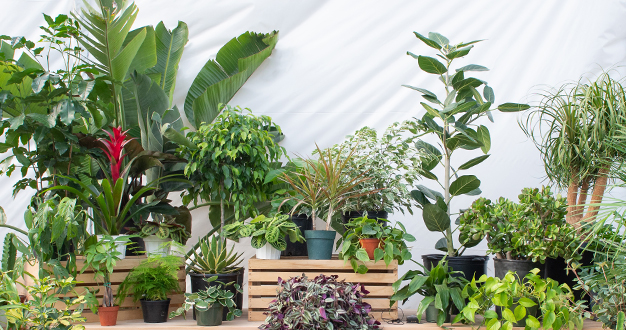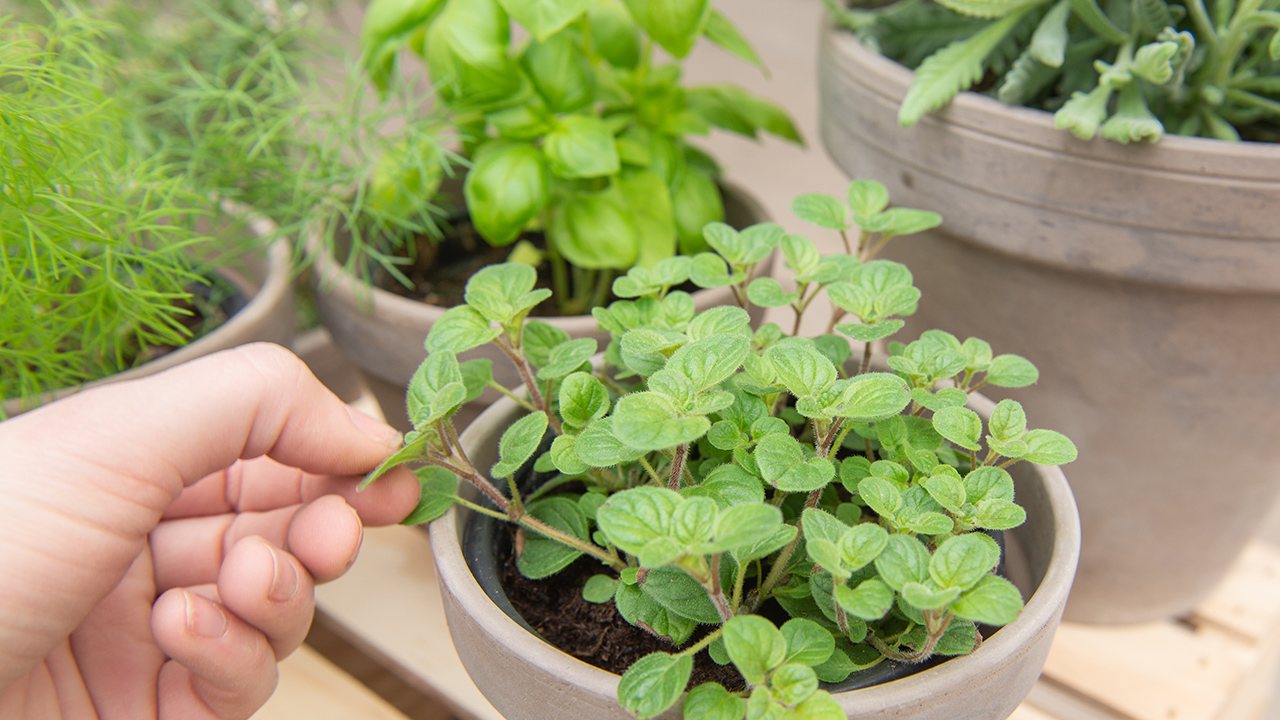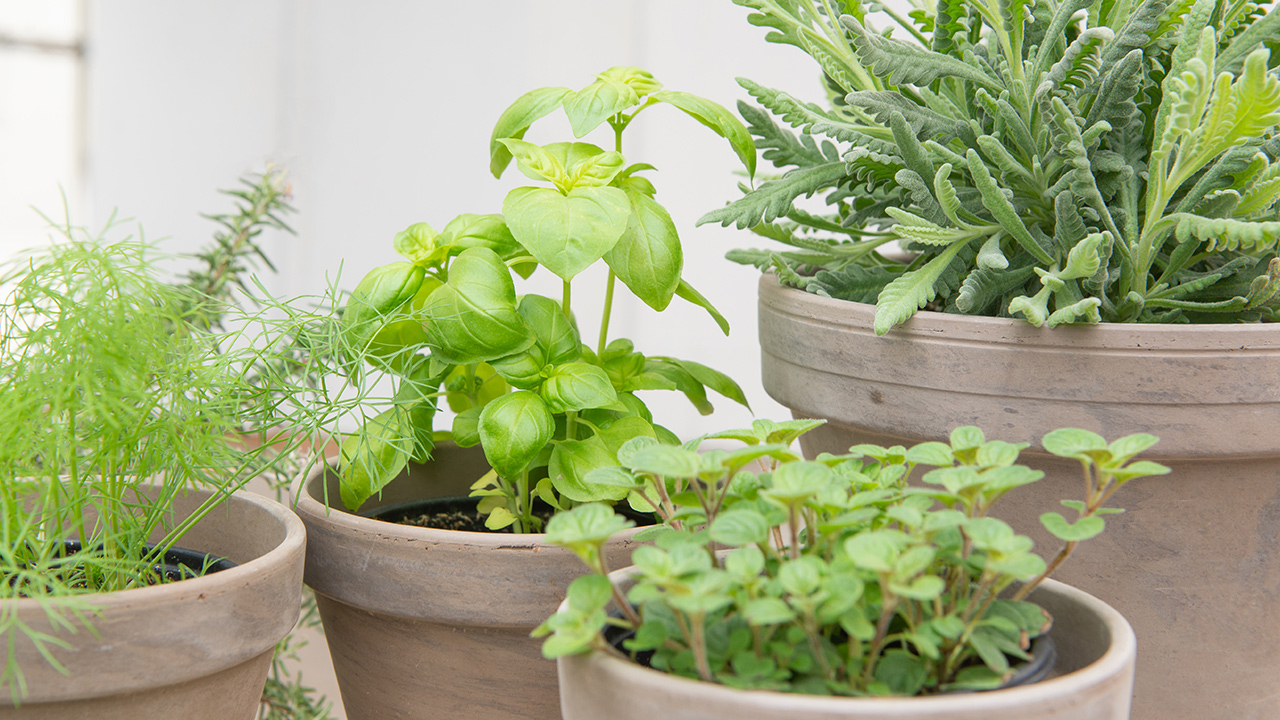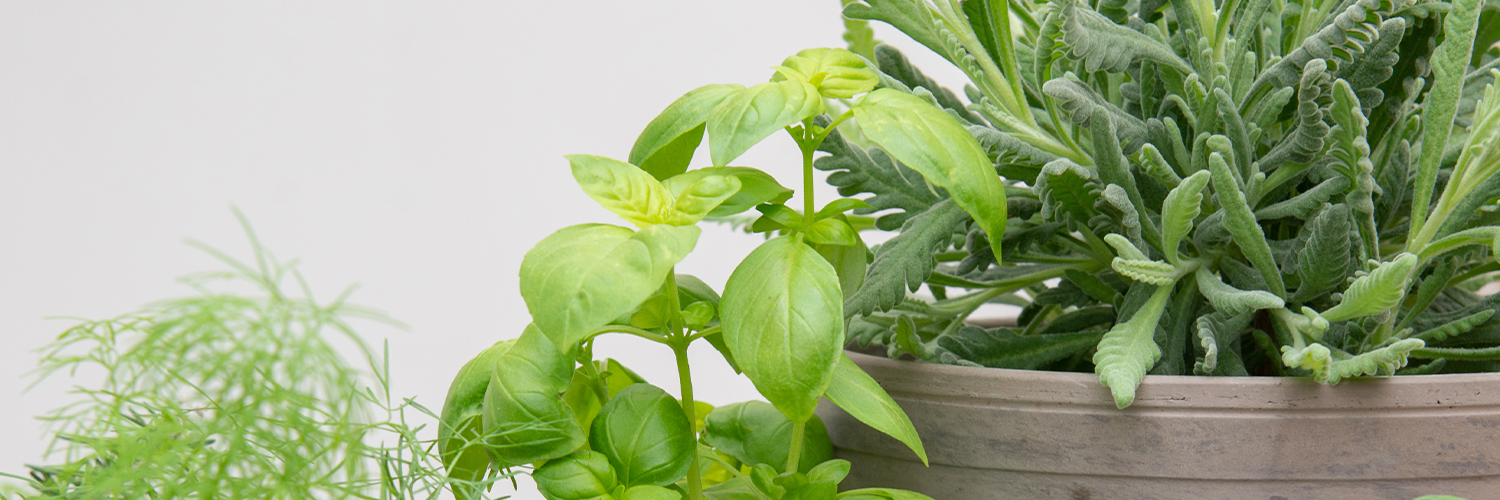
Growing your own fresh herbs indoors is one way to enjoy their bright flavors and tantalizing aromas in your favorite recipes even when it’s cold outside. Of course, dried herbs have their benefits too, but there are times when only fresh will do – think of the incredible flavor of fresh basil pesto.
Here, we compare the unique culinary qualities of both fresh and dried herbs – highlighting the times when fresh herbs just can’t be replaced. We also share a few tips for keeping your indoor herb garden going strong on your kitchen windowsill until the outdoor growing season returns.

When Fresh is Best
Both fresh and dried herbs bring their own unique and important contributions to our recipes, but certain cooking methods bring out the best in each one. For instance, dried herbs work best in dishes with long, slow cooking times – like soups and sauces. Heat and time allow the herbs to soften and infuse all that flavorful goodness throughout the entire dish. The drying process also concentrates the flavors – particularly in woodier herbs like oregano, thyme, and rosemary – which means you can use about one-third of the amount you would use fresh.
But fresh herbs don’t need heat to release their more delicate, balanced, and nuanced flavors and aromas – and certain recipes would never be the same without these special qualities. Fresh herbs shine their brightest when there’s little to no heat involved – fresh salad dressings and sauces, lemonades and other drinks, and beautiful garnishes for special holiday entrees. If you do add fresh herbs to a simmering dish, add them toward the end of the cooking process. This way, you can enjoy a burst of flavor and aroma before the volatile oils that create them can dissipate.
And combining both fresh and dried herbs in one dish can utilize the unique qualities of both. For example, a chef might use dried oregano to flavor a pizza sauce, then top the newly-baked pie with thin ribbons of fresh basil right before serving.

Caring for Indoor Herbs
For best growth and flavor, most of our favorite culinary herbs require six or more hours of bright sunlight each day – a spot right next to a south-facing window is ideal. Or you can also use supplemental light if needed.
Fresh herb plants also like good drainage. When potting, it’s important to start with a good-quality professional potting mix for indoor plants. Potting mixes balance the right amount of moisture-retention with good drainage and aeration for the roots too. When you water, wait until the top inch or two of soil feels dry before giving a slow, thorough drink until excess water runs from the drain hole in the bottom. Although it’s possible to grow herbs in pots without drain holes, they tend to be sensitive to soggy soil – a drain hole makes it easier to maintain a consistent level of moisture in the soil.
And last, use your herbs often. Not only are they delicious additions to almost any recipe, regular pinching will help keep your herb plants compact and producing flavorful new growth.

Spice Up Your Winter
Winter doesn’t have to mean an end to the unmatched flavor and aroma that fresh herbs bring to your cooking. Come take a walk through the Greenhouse to find all your favorite culinary herbs – oregano, thyme, lavender, rosemary, basil, cilantro, dill, chives, parsley, mint, and sage too – all potted up and ready for your favorite dishes at home.


